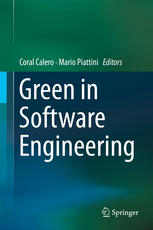

Most ebook files are in PDF format, so you can easily read them using various software such as Foxit Reader or directly on the Google Chrome browser.
Some ebook files are released by publishers in other formats such as .awz, .mobi, .epub, .fb2, etc. You may need to install specific software to read these formats on mobile/PC, such as Calibre.
Please read the tutorial at this link: https://ebookbell.com/faq
We offer FREE conversion to the popular formats you request; however, this may take some time. Therefore, right after payment, please email us, and we will try to provide the service as quickly as possible.
For some exceptional file formats or broken links (if any), please refrain from opening any disputes. Instead, email us first, and we will try to assist within a maximum of 6 hours.
EbookBell Team

4.0
76 reviewsThis is the first book that presents a comprehensive overview of sustainability aspects in software engineering. Its format follows the structure of the SWEBOK and covers the key areas involved in the incorporation of green aspects in software engineering, encompassing topics from requirement elicitation to quality assurance and maintenance, while also considering professional practices and economic aspects.
The book consists of thirteen chapters, which are structured in five parts. First the “Introduction” gives an overview of the primary general concepts related to Green IT, discussing what Green in Software Engineering is and how it differs from Green by Software Engineering. Next “Environments, Processes and Construction” presents green software development environments, green software engineering processes and green software construction in general. The third part, “Economic and Other Qualities,” details models for measuring how well software supports green software engineering techniques and for performing trade-off analyses between alternative green practices from an economic perspective. “Software Development Process” then details techniques for incorporating green aspects at various stages of software development, including requirements engineering, design, testing, and maintenance. In closing, “Practical Issues” addresses the repercussions of green software engineering on decision-making, stakeholder participation and innovation management.
The audience for this book includes software engineering researchers in academia and industry seeking to understand the challenges and impact of green aspects in software engineering, as well as practitioners interested in learning about the state of the art in Green in Software Engineering.